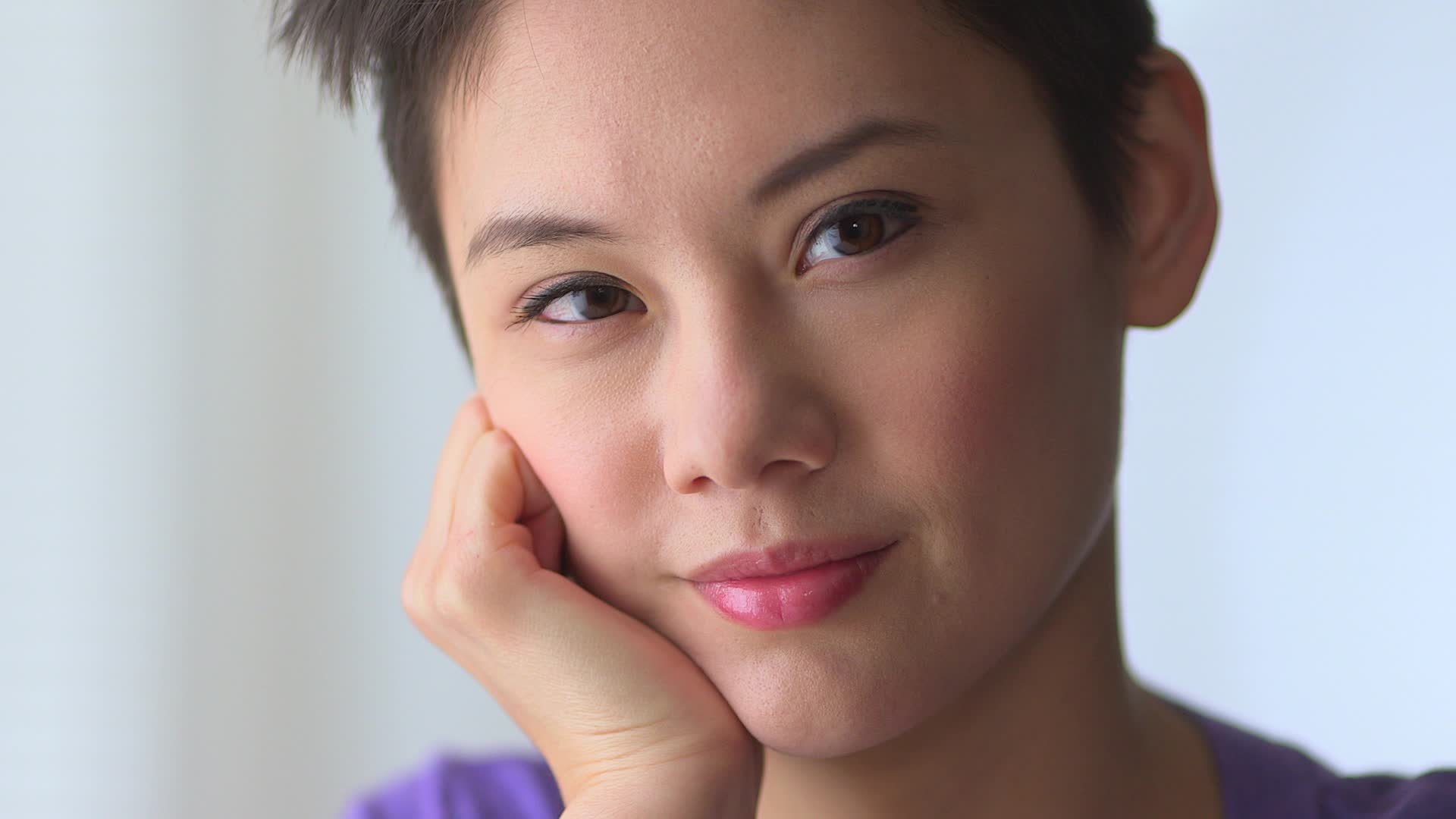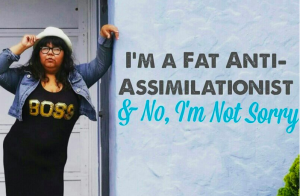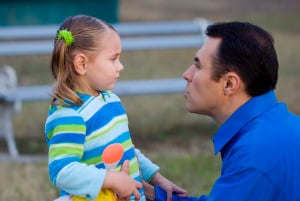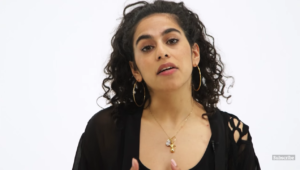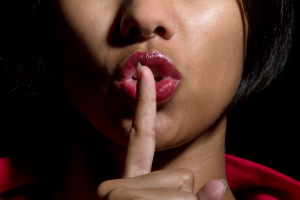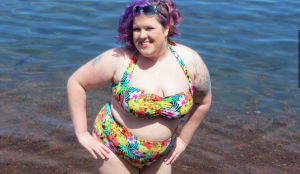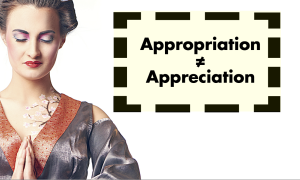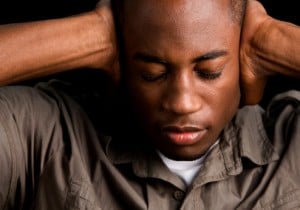I was on my way home when I passed a person I frequently see outside of my favorite coffee shop.
The person stopped me, and with a confused look on their face, they asked, “Yo, so I see you around here all the time. But—like—are you a boy or a girl?”
I paused for a moment, thought about it, and responded, “Both!”
Gender.
Gender is a messy, complex, and ever-shifting experience for me.
There is no simple way to explain my gender to other people – or even to myself. This is sometimes a difficult and lonely place to be.
We live in a society preoccupied with categorizations and label one another (and ourselves) by race, gender, sexuality, education, class position, caste, and so on.
Often times, there is little to no acknowledgement of the gray area between categories and binaries – even though that’s where so many of us reside.
Today, I describe my gender is “non-binary, genderqueer, gender fluid,” but growing up, I had no language or awareness to make sense of what I was feeling about my gender.
In elementary and junior high school, the labels for me were clear: “gay,” “tomboy,” “queer,” “freak,” “boy,” “mannish,” to name a few.
While those words were hurtful to a kid who was assigned female at birth, whose first name was Michal, who knew no queer or trans* role models, and who never felt that their body encapsulated the complexity of their essence, they now hold a sense of identity and community for me.
Had I been exposed to education about the wide variation and diversity of gender before my early twenties, I would have come to understand and accept my genderqueer identity much sooner.
Although I can now look back upon younger years with a sense of clarity and compassion for myself, I suffered so much during those times.
I was constantly bullied for being a “tomboy,” and when I made failed efforts to “fit it” by painting my nails and covering my face with makeup, I was harassed further. I also felt like I was lying to myself, even then.
I became depressed and would often pretend to be sick to get out of school.
I was fortunate enough to have a supportive mother, who did the best she could, even though she didn’t understand what was happening to her kid. But so many gender variant and transgender young people face bullying and harassment not only in school and work settings, but also at home.
This often leaves trans and gender non-conforming people at much higher risk of violence, depression, and suicide than their cisgender peers.
Although there are growing stories of queer and trans youth that are well-adjusted and supported by their communities and families, there is much work that needs to be done to challenge the harsh gender binary within greater US society.
Sadly, trans people, non-binary folks, and a whole host of others whose gender falls outside of the limited “he/she” split sometimes go our entire lives being made to feel abnormal, invisible, and otherwise marginalized in nearly every aspect of our life.
How My Experience in the LGBTQIA+ Community Limited and Liberated My Gender Identity
It was not until I came out as queer that I also began to further question my gender identity.
As a teenager, it was primarily LGBTQIA+ spaces and figures that allowed me to further explore the many expressions of my gender identity. Initially, this was an incredibly important experience for me.
I learned about drag, transgender people – some of whom transitioned their body and presentation to align with their identities, and was enamored with the diversity of queens, kings, and self-identified freaks who fell outside of the gender binary.
The queer community was one of the first places that I felt free to explore the sides of myself that my childhood tormentors attempted to beat out of me, and still remains a primary source of strength, community, and voice for me.
But as I learned more about the messiness of gender and intersecting identities, I noticed and internalized gender roles and dynamics within queer communities that were reflective of values held by greater, heteronormative society.
I assumed the role of holding the door open for my dates, paying for dinner, and otherwise “providing” for my partners – not because they were incapable, but because it was “my role” as the more masculine of us. But if my partner identified as trans-masculine or masculine of center, I felt pressure to present in more “feminine” ways.
Within each of these examples is the reinforcement of a binary – specific actions that were expected of me depending on my presentation. This normalizes the idea that, even within queer community, there isn’t room for folks whose genders are more fluid.
Although the LGBTQIA+ community can be a space of support and community for genderqueer and non-binary people, there are also existing dynamics that reinforce the gender binary and that should be challenged at times.
But Here’s the Thing: Gender Presentation and Gender Identity Are Not the Same Thing
In a recent conversation with a lesbian colleague who has limited knowledge about non-binary genders, I explained that, although I dress in “traditionally” masculine presentation most of the time, there are also occasions where I am more inclined to present as my version of femme.
I explained that, despite this, my gender identity remains the same.
Her response: “But isn’t that confusing to other people?”
I was taken aback by her comment.
My gender identity and presentation is my own, not to be determined by anyone else. But, then again, we are not socialized in a way that allows for this to be a widely accepted norm, and the LGBTQIA+ community is not free of criticism in this area either.
We within the LGBTQIA+ community are also responsible for making assumptions about gender based on what an individual looks like – but we must keep in mind that presentation is not always the same as identity.
The experience of myself as someone who is read as more “masculine” – whatever that means! – and who also identifies as genderqueer is much different than someone who presents more in line with our expectations of their birth-assigned sex.
Although our community does a lot of work to embrace the diversity of genders and sexual identities, we are still susceptible to the same views of gender as mainstream society – views that label folks based on what they’re wearing and what physical features we can distinguish.
A person who is assigned female at birth and decides to wear short skirts, makeup, and other presentation that society tends to label as “feminine” may identify as “he.”
Someone who is transitioning female-to-male (FTM) may choose to identify with “they/them” pronouns.
It’s easy to automatically label folks based out our deeply socialized assumptions, but when we do this, we may unintentionally invalidate someone’s experience and identity.
Presentation is not the same thing as identity, and we need to challenge ourselves to let individuals self-determine their own identity – even if it is “confusing.”
The Gender Binary Also Leads to Femme Silencing and Invisibility
The pressure to be masculine is often coupled with the silencing of feminine people within the LGBTQIA+ umbrella.
The way the queer community often holds up and prioritizes masculinity and androgyny as the most desirable forms of expression disregards the fact that there are multiple forms of presentation and identity that encapsulate genderqueer and trans identity.
Within queer communities, I have found that it’s much more likely for people to ask for my preferred gender pronouns because my gender is more ambiguous to them than, say, a femme friend who they may automatically label as “she,” but who also identifies with they/them pronouns.
The message that this example sends is that there is a specific way to be genderqueer and/or androgynous, and that femmes do not fall within that umbrella.
Challenging this assumption begins with leaving room for folks to self-determine their own gender identity and presentation – it’s not up for us to label anyone, particularly when we are working toward building inclusive communities.
So, Yes! I Refuse to Pick One and Stick With It!
We too often practice ways of being that reinforce all types of binaries within our communities – whether it is the exclusion of folks who identify as bisexual or pansexual, the exclusion of trans women in feminist spaces, or the pressure to pass– it’s way past time that we do a better job of respecting gender and sexual fluidity in all of its manifestations.
On days where I am feeling great about my complex gender, I feel proud of my ability to shapeshift and present in whatever way fits me best, and enjoy the shifts as they come.
But on days where I struggle to accept what non-binary gender means for me, the root of the struggle is almost always from an internalized pressure to transition in order to “pass” in a way that makes more sense to the people around me.
On these types of days, I frown at the way my shirts make my chest look, go back and forth about hormones, and am dysphoric about my body.
The internalized message screams, “You can’t be both – you need to pick one and stick with it.”
Much of this internal dialogue comes from being tired of how other people who “don’t get it” perceive me on a daily basis, but part of it is also internalized pressure from the queer community.
It is vitally important that we honor the members of our community who go through the process of modifying their bodies to align more with their identity.
And it’s important that we are not perpetuating the idea that, in order to be seen as trans, genderqueer, or non-binary, we must present in particular ways – as “masculine” or “feminine” only.
This pressure to “pass” can minimize the complexity and beauty of our experiences as non-binary people.
In order to make folks feel held and affirmed in exactly who they are – regardless of their presentation – we need to pay attention to how mainstream notions of gender show up within our communities.
This Begins With Awareness
My experiences have shown me that everyone, regardless of identity and political education, is capable of making assumptions about gender non-conforming people that are limited and invalidating.
The lack of access to stories outside of dominant narratives on gender not only teaches us how to continue sexist cycles of oppression. It also teaches children and young people who may not identify with their birth-assigned sex and gender that they are wrong – unworthy of love and acceptance.
But the fact of the matter is, there is nothing wrong with me, or the so many of us who identify in different and ever-expanding ways.
There is something wrong with the limited, binary, all-or-nothing views of gender and sexuality that dominate mainstream (and some of) queer culture.
We must constantly challenge these views both within and most especially outside of the LGBTQIA+ community. We deserve to treat each other and ourselves so much better.
[do_widget id=”text-101″]
Michal “MJ” Jones is a Contributing Writer for Everyday Feminism and is an awkward, Black, non-binary queer educator, activist, and musician writing to you from Oakland, CA. They earned their BA in Sociology from Sonoma State University, and went on to earn an MA in Student Development Administration from Seattle University and remain committed to improving access and retention to higher education. Listen to their music or read more of their work. Follow them on Twitter @JustSayMJ and read their Everyday Feminism articles here.
Search our 3000+ articles!
Read our articles about:
Our online racial justice training
Used by hundreds of universities, non-profits, and businesses.
Click to learn more


